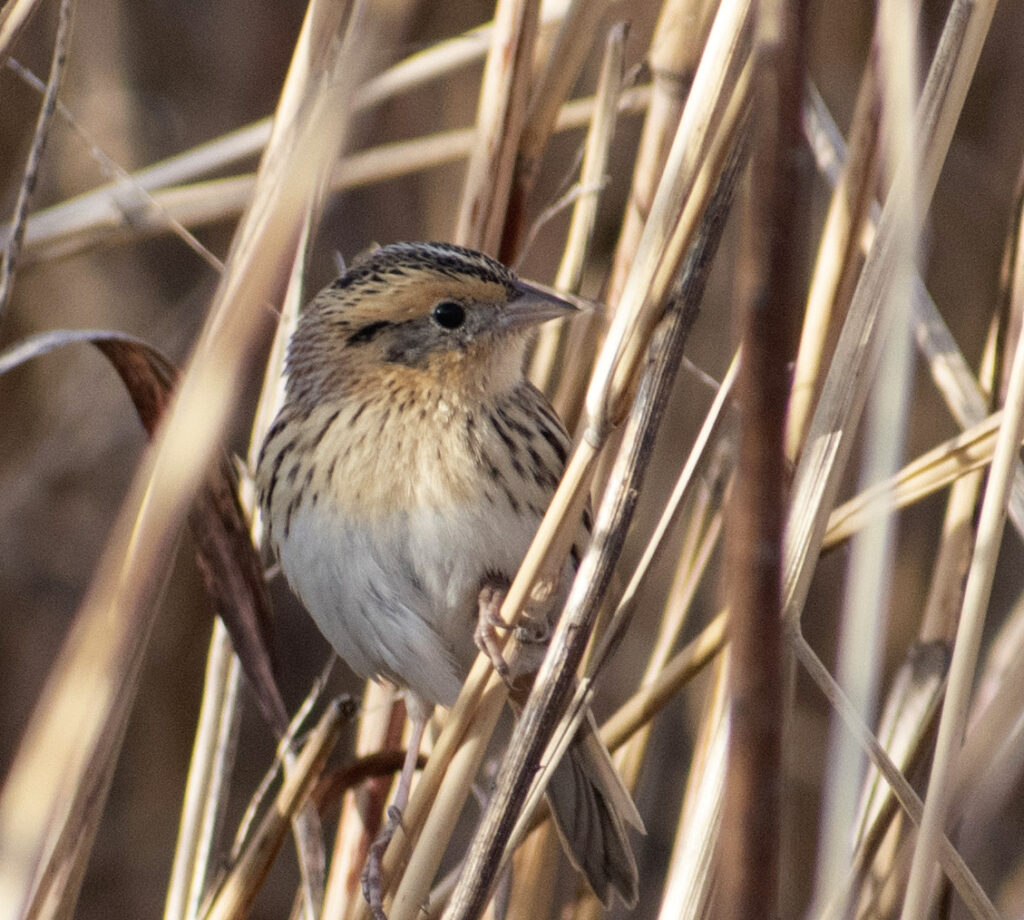
By Grace Huffman
Fall and winter are the best times for viewing sparrows, and while I wrote about sparrows last month, a couple of recent encounters inspired me to write about another sparrow this month. While White-crowned Sparrows are fairly common and easy to find, LeConte’s Sparrows can be a challenge. It’s definitely worth the effort sometimes required to see one!
LeConte’s Sparrows are beautiful little birds, with lots of golden & orange tones. They have high, scratchy songs and their calls are also high & sharp. They spend much of their time on or near the ground, and like to run instead of fly away from danger. And that beautiful plumage? It helps keep them camouflaged and adds to the challenge of finding them.
These sparrows breed in northern US & central Canada, where they build a nest only about a foot off the ground in dead grasses. They are believed to be generally monogamous, although it’s not known how often the birds in a given pair may mate with others. If there’s suitable habitat, nests may be found in closer proximity to each other. Interestingly enough, AllAboutBirds doesn’t include inculabtion or fledgling times, but they do lay 4-5 eggs in a clutch.
In the winter, they can be found in fields with or near a body of water, and while they also maintain a winter territory, it’s much smaller than in the summer. You can find wintering LeConte’s from Missouri down to the Gulf Coast. Here in Oklahoma you can find them in migration and/or winter across much of the state. My very first LeConte’s Sparrow was during an OKC Audubon field trip to the Wichita Mountains led by Kurt Meisenzahl a few years ago. We all walked through a field of high grass until we flushed a bird that didn’t go very far before going right back down into the grass. Sure enough, there was the orange face of a LeConte’s! Where walking through fields is permitted, this is a great way to find them. This year I’ve seen one at Drummond Flats, and a surprising 5 in a field south of Lake Overholser! Unfortunately, the spot near Overholser won’t last, as it’s being developed into what looks like apartments.
Habitat loss and degredation are the main reasons these birds are in decline. While currently listed as Least Concern, they lost 73% of their population between 1966 & 2015, and if the current rate of decline continues they will likely lose another 50% of the current population in under 40 years. Still, hopefully the next time you are out somewhere like Drummond Flats or Wichita Mountains this winter, you’ll get to see one of these gorgeous sparrows! (References: allaboutbirds.org)
